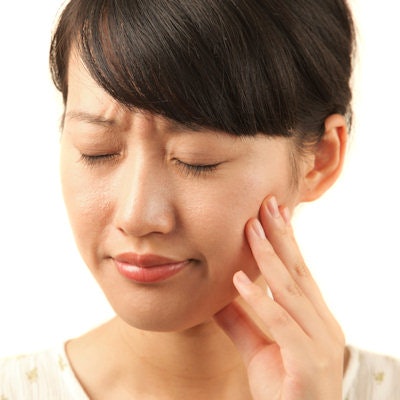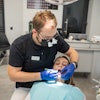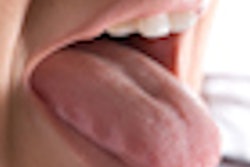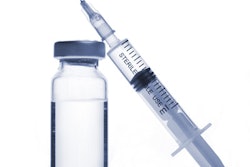
Reports of infrequent but prolonged paresthesias after the use of 4% articaine beg the question of whether this local anesthetic is more neurotoxic than lidocaine. To learn more, researchers conducted in vitro experiments that produced some unexpected results.
They compared the neurotoxicity of these two commonly used drugs in neural cells by testing formulations used clinically in patients (2% lidocaine, 1:100,000 epinephrine or 4% articaine, 1:100,000 epinephrine) and also pure formulations. The investigators found that articaine had no effect, while only the pure formulation of lidocaine increased neuronal death.
"Articaine does not damage neuronal cells more than lidocaine in this in vitro model," the authors wrote (Anesthesia Progress, Summer 2018, Vol. 65:2, pp. 82-88). "While this does not question the safety of lidocaine used clinically, it does suggest that articaine is no more neurotoxic, at least in the in vitro setting."
The study was conducted at the University of Pennsylvania (Penn) in Philadelphia, and the lead author was Farraj Albalawi, DScD, BDS, previously an orthodontics resident at Penn and currently an assistant professor at King Saud bin Abdulaziz University for Health Sciences in Riyadh, Saudi Arabia.
Feels funny
In the U.S., the most widely used dental local anesthetic is 2% lidocaine, 1:100,000 epinephrine, while in Canada and some European countries, it is 4% articaine, 1:100,000, which is thought to provide comparatively better infiltration anesthesia, the authors noted. Systemic and local toxicity appear to be similar with the drugs, although some studies have reported an increased risk of paraesthesia with articaine following inferior alveolar nerve blocks.
“Articaine does not damage neuronal cells more than lidocaine in this in vitro model.”
Paresthesia is a burning or prickling sensation that is usually painless and described as tingling or numbness, skin crawling, or itching. Nonsurgical cases of paresthesia in dentistry are typically related to inferior alveolar nerve block injections and affect the lingual nerve often than the inferior alveolar nerve. The vast majority of these cases resolve within eight weeks, although two-thirds of those that don't recover quickly may never fully do so, the authors wrote.
In the current study, the researchers sought to determine in vitro if articaine had greater neurotoxicity than lidocaine. They used cells from a human-derived SH-SY5Y neuroblastoma cell line and clinically relevant formulations of lidocaine (2% Xylocaine, Dentsply Sirona) and articaine (4% Septocaine, Septodont), exposing the cells to drugs for five minutes.
Neurotoxicity occurs when the exposure to toxic substances (neurotoxicants) alters the normal nervous system activity. This can eventually disrupt or even kill neurons, key cells that transmit and process signals in the brain and other parts of the nervous system.
The researchers used drugs directly from the cartridge used to treat patients at full strength or diluted. After washing the cells, they exposed them to Live/Dead assay (L3224, ThermoFisher Scientific) for 30 minutes.
The SH-SY5Y cells reacted as predicted when targeted by lidocaine and articaine, the study authors reported. They also found that neither drug significantly affected cell viability at any concentration from the cartridge, although 2% lidocaine increased the ratio of dead to live cells substantially.
To help determine the effects of the Xylocaine and Septocaine components, the researchers also performed the cell viability experiments with pure powdered lidocaine (MilliporeSigma) and articaine (Septodont). They dissolved the drugs in the same medium, using concentrations designed to allow the maximum levels of the drugs to be approximately the same for the powder and cartridge formulations.
They found no effect of purified articaine at any concentration, but 74 mM of purified lidocaine significantly increased the percentage of dead cells to 55%.
"Given that lidocaine is considered a very safe drug clinically, it is likely that this level of significance in the powder form of the drug does not translate to the clinic," the authors wrote.
Since there have been reports of delayed anesthetic recovery with articaine, the investigators conducted experiments to examine whether recovery from nerve block was delayed after use of either anesthetic. They monitored the response to depolarization 30 minutes after treatment with the drugs and found no significant effect of articaine but significantly reduced responsiveness in cells treated with lidocaine.
"While these findings are the opposite of what was predicted based on the proposed enhancement of paresthesia by articaine in the clinical setting, data from the two different assays in the present study support the conclusion that articaine does not directly lead to neuronal damage in vitro," the authors wrote.
Other mechanisms possible
The authors listed no study limitations, but they suggested that other mechanisms could be linked to the differing rates of paresthesias reported with articaine and lidocaine in the literature.
"As neither articaine in the pure form nor articaine from the clinical cartridge led to issues in the present study, it is unlikely that additives increase neurotoxicity," they wrote.



















